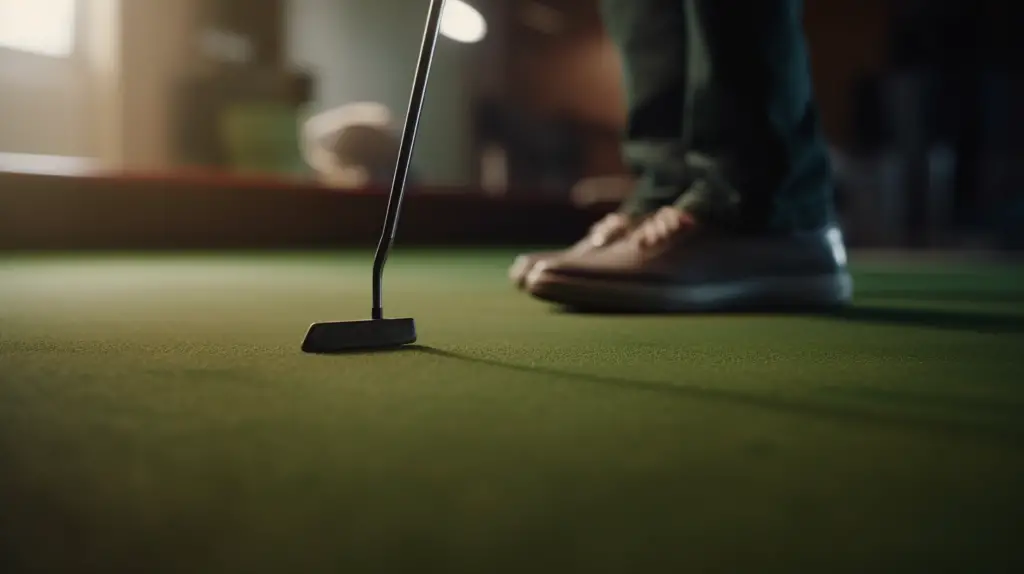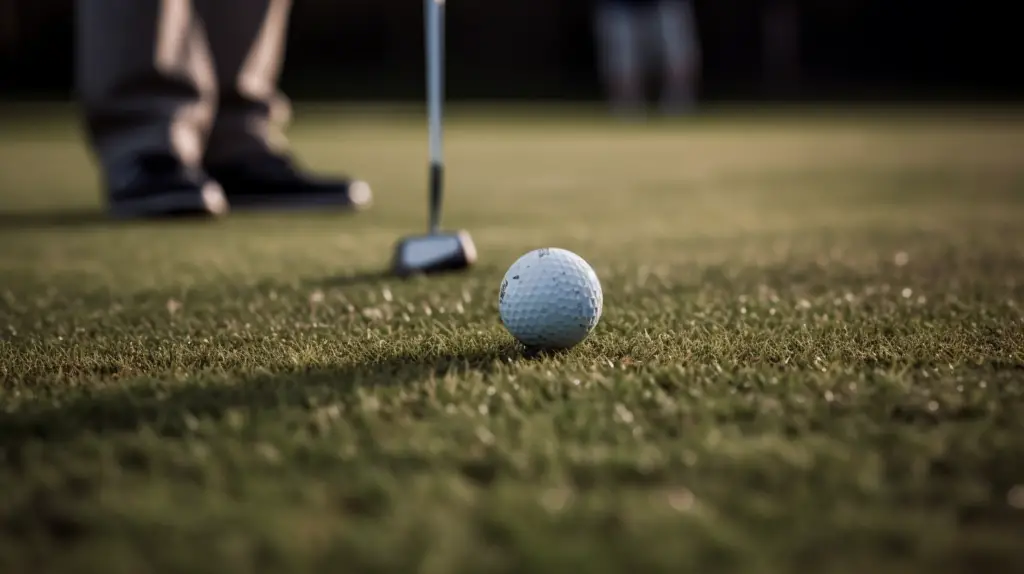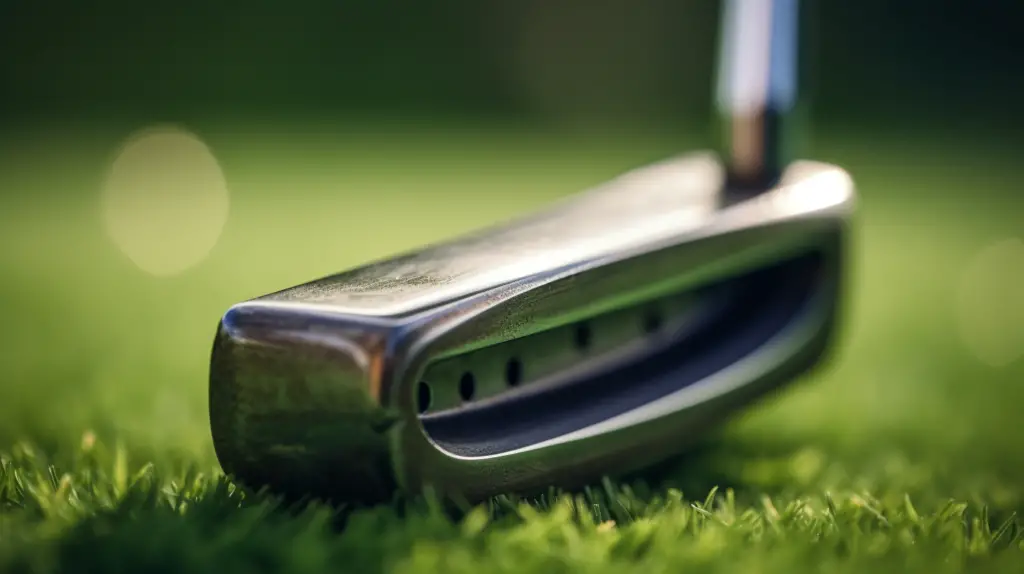Last Updated on October 27, 2023
Golf is a sport that requires mastery of multiple techniques, including the correct way to hold a putter. Holding a putter correctly can make all the difference in a game of golf, and it’s important for any golfer to learn how to do this properly. This article will provide guidance on how best to hold a putter when playing golf, outlining strategies and considerations that should be taken into account.
Basics Of Putting Technique
Putting is a fundamental skill in golf, and learning the basics of putting technique can help improve one’s game. The basic techniques are centred around developing consistency in stroke mechanics, aiming correctly and gauging the appropriate speed for each putt.
To begin with, it is important to understand how to hold a putter properly. A comfortable grip should be adopted that allows minimal movement during the putting stroke; players generally use either an overlapping or interlocking style of grip. Furthermore, when addressing the ball, the player must ensure their arms hang naturally beneath their shoulders while having good posture throughout the swing. This helps promote accuracy by allowing consistent shoulder rotation as well as providing control over hand movements which could lead to inconsistent contact between clubface and ball.
Additionally, setting up with your eyes directly above the golf ball will enable you to aim accurately at your target line – this includes proper alignment of feet and body towards the aim point on hole completion. Finally, understanding how distances affect putting speed is essential in order to judge a suitable power output for each shot; for example, longer putts require more strength than shorter ones due to acceleration slowing down over distance. Therefore mastering these fundamentals of putting technique will set a strong foundation for lower scores on the course.
Grip Types And Posture

The correct grip is an essential element in the putting technique. To ensure a successful putt, it is important to understand how to properly hold a putter; this includes learning about different grip types and postures while using a putter.
There are two primary grip types that can be used when holding a putter: the overlapping grip and the cross-handed grip. The overlapping grip is one of the most popular grips among amateur golfers due to its ease of use and familiarity. This type of grip involves placing your dominant hand on top of the club and interlocking with the weaker hand below the club’s shaft, allowing for better control over the speed of each shot. On the other hand, the cross-handed grip requires users to place their dominant hand underneath their non-dominant hand at address, which offers more stability during swings but can be difficult for beginners to master. It is recommended that players experiment with both types of grips until they find one that works best for them.
In addition to these two main grips, proper posture should also be taken into consideration when putting with a putter. Proper positioning allows golfers to generate maximum power from every swing by keeping their bodies aligned correctly through impact. It is important to keep your head still, back straight, knees bent slightly, arms relaxed, and wrists lose throughout each swing so as not to maximise accuracy and distance control.
Steps For Establishing The Right Hand Position

Establishing the right-hand position is essential for a successful putter-grip technique and putting. To start, it’s important to ensure that the grip of the putter falls comfortably into the fingers rather than in the palms or base of the hands. The handle should be held lightly but securely enough so that no additional pressure needs to be applied during a stroke. It is also beneficial to make sure that when holding a putter, there is an equal amount of space between each finger on both hands with minimal contact points. This will enable better control and allow for the more consistent placing of your hands throughout swings as well as strokes. Additionally, one should take care to maintain their wrists and arms in their natural, relaxed positions while gripping their club. Keeping these elements in mind can help create proper positioning leading to improved accuracy and distance while putting.
The Role Of The Left Hand In Putter Grip
The left-hand plays an important role in proper putter grip technique. Generally, the left hand should be placed beneath the right and pointing up towards the target line. This position of the left-hand helps to promote a solid connection between both arms which can help with maintaining balance throughout the stroke. Additionally, this positioning allows for a more consistent release through impact while helping to prevent any ‘flipping’ or ‘rolling’ action that could cause push or pull shots off line. For players who have difficulty achieving this setup or are looking to make adjustments, a cross-handed grip may provide some benefits. In this style of grip, the hands are crossed over each other so that the dominant (right) hand is on top and primarily controls most aspects of the putting motion. While not advised for beginners, experienced golfers may find that it provides them with better control as well as improved accuracy due to its resulting stronger wrist angle at address.
Guidelines For A Cross-Handed Grip
The cross-handed grip is a putter-grip technique that has become increasingly popular amongst golfers for putting. It involves placing the left hand below the right on the shaft of the putter and entails reversing both hands from their traditional positions when holding a club in golf. This grip can be beneficial to higher handicappers as it creates an alignment between arms and shoulders which may increase accuracy in putting strokes.
When using a cross-handed grip, the player should ensure that their wrists are extended so they are parallel with each other. The pressure exerted by each hand should also be equal; this will help create a smooth swing and avoid any jerky movements while taking your shot. Furthermore, make sure that you keep your elbows tucked close to your body throughout your stroke, as this too, is essential to maintain balance during your swing motion.
Methods To Avoid Common Mistakes

Having established the proper cross-handed grip for a putter, it is important to also consider methods of avoiding common mistakes when putting. One way to avoid making mistakes while putting is by ensuring that one’s posture and stance are correct. It is essential to keep one’s body balanced with feet slightly wider than shoulder width apart, knees bent slightly and arms comfortably away from your body throughout the entire stroke. Additionally, golfers should strive for uniformity in their routine so that each stroke can be repeated consistently; this will help prevent putting mistakes due to incorrect placement or motion during the swing.
Another mistake-prevention strategy involves focusing on aiming correctly rather than trying to force the ball into the hole. This means creating an appropriate line between the starting point and the intended target. Golfers should practice lining up shots as well as taking note of any slopes or breaks in order to better understand where they need to aim in order to accurately hit their target. In addition, visualizing successful strokes prior to attempting them in real life can be useful for those who struggle with accuracy issues or confidence problems related to putting.
Conclusion
The use of a putter is an important part of golf and requires the correct technique for success. It is essential to choose the correct type of putter for both personal preference and skill level, as well as practice regularly in order to improve putting accuracy. Different clubs should be used depending on the length and terrain of a putt, while different grips can provide advantages such as better alignment or increased control. An overhand grip provides stability, while an underhand grip may increase precision, while a cross-handed grip can provide more natural movement during the stroke.
As with any aspect of golf, understanding how best to hold a putter is key to improving overall performance. Practice makes perfect when it comes to putting; perfecting techniques such as posture, stance, club choice and hand position will give players greater confidence when facing challenging shots on the course. Ultimately, by using the right tools and practising correctly, players are able to gain consistency that will help them reduce strokes from their scorecard every time they hit the greens.
In conclusion, choosing and holding a putter correctly is an integral part of being successful at golf. By taking into consideration factors such as practice drills and gripping methods, players are able to gradually refine their skills and lower their scores consistently each round. With proper instruction combined with regular practice sessions on the range or green side bunker, anyone has the ability to master this crucial area of the game.



